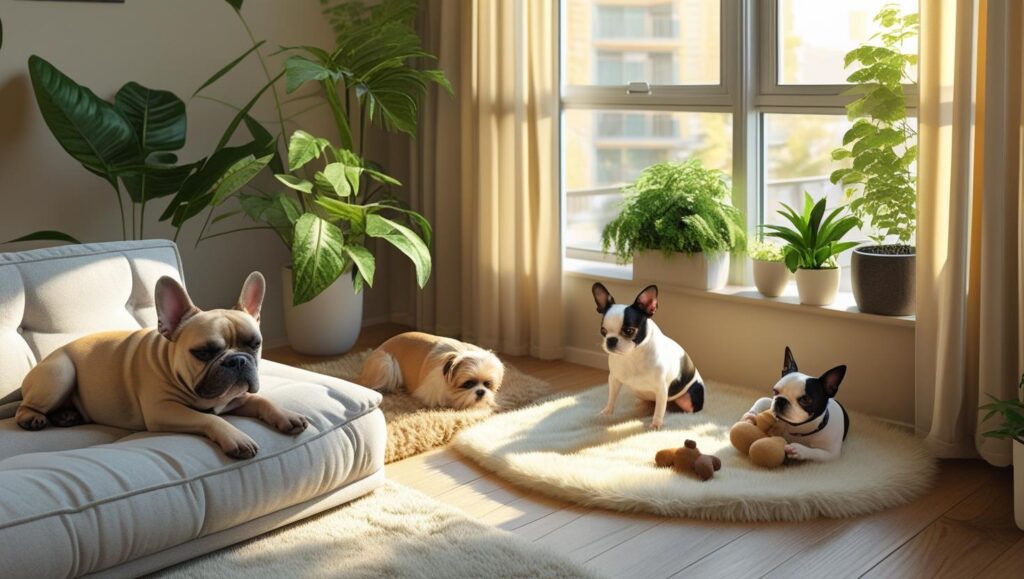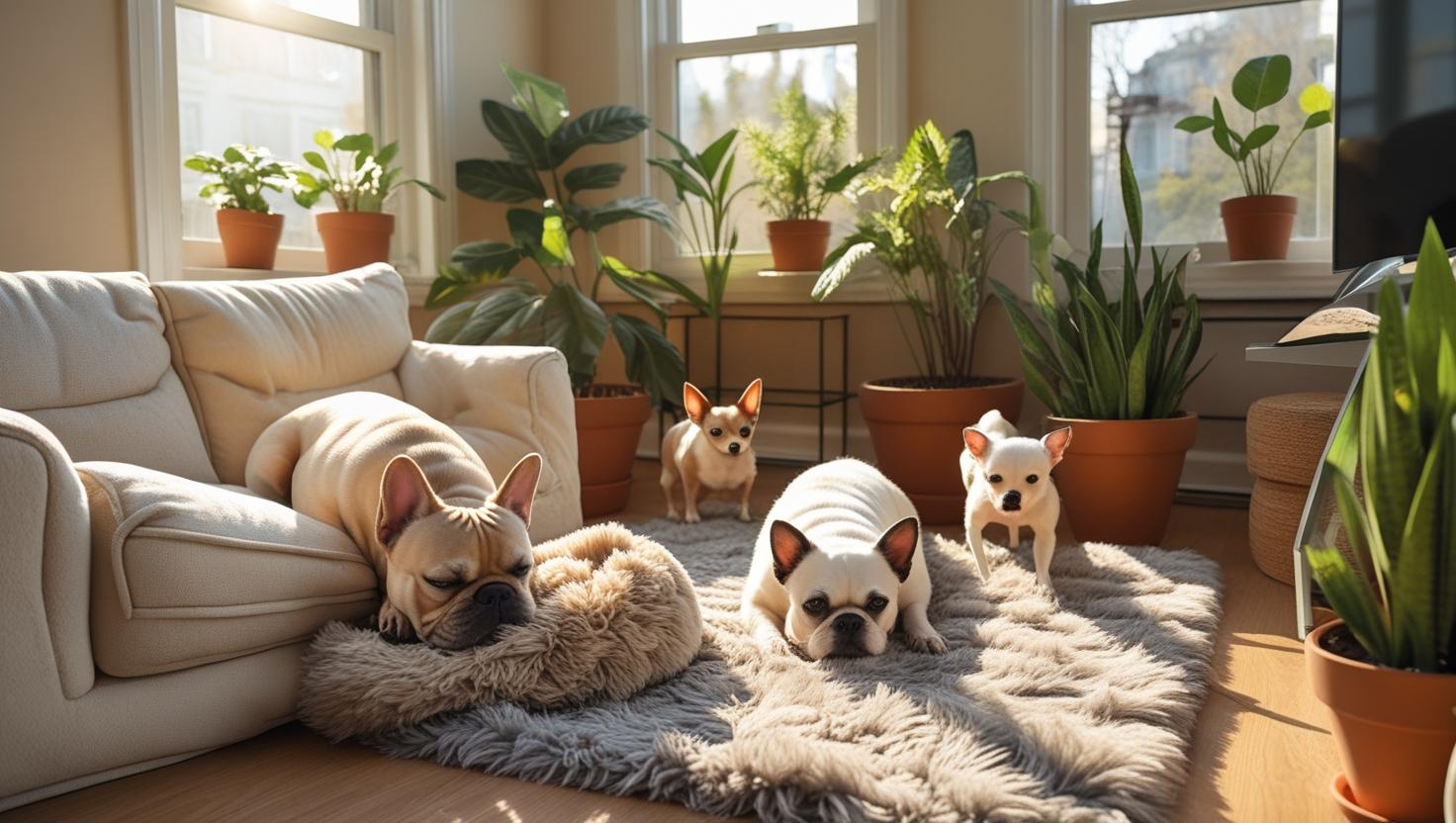Living in an apartment doesn’t mean you have to give up on your dream of having a dog. In fact, many small dog breeds thrive in apartment settings due to their size, adaptability, and low exercise needs.
The key is choosing a breed that matches your lifestyle, noise tolerance, and activity level. In this article, we’ll explore the best small dog breeds for apartment living, based on temperament, energy level, barking tendencies, and ease of care.
Whether you’re a first-time dog owner or a seasoned pet parent, this guide will help you make an informed decision.
What Makes a Dog Breed Ideal for Apartment Living?

Before we dive into the list, it’s important to understand what qualities make a dog suitable for apartment life:
- Size: Small or toy-sized dogs take up less space and are easier to manage indoors.
- Barking Level: Excessive barking can be a problem in close quarters.
- Energy Needs: Dogs with moderate energy levels adapt better to smaller living spaces.
- Social Temperament: Friendly dogs that tolerate strangers and neighbors make apartment living smoother.
- Trainability: Easy-to-train breeds are often better suited for environments with rules and limitations.
Now let’s look at some of the top breeds that check all these boxes.
1. French Bulldog – The Quiet Companion
Why They’re Great for Apartments
The French Bulldog is compact, calm, and rarely barks. These low-energy dogs are content lounging around and require only short daily walks. Their flat faces mean they don’t tolerate heat well, making indoor environments ideal.
- Weight: 16–28 lbs (7–13 kg)
- Temperament: Friendly, affectionate, alert
- Exercise Needs: Low
- Noise Level: Very low
Considerations
Frenchies are prone to breathing problems (brachycephalic syndrome), so avoid overexertion or extreme heat.
2. Cavalier King Charles Spaniel – The Gentle Lapdog
Why They’re Great for Apartments
These small, affectionate dogs adapt well to all living environments, including apartments. They’re known for their calm temperament and deep loyalty to their owners.
- Weight: 13–18 lbs (5.9–8.2 kg)
- Temperament: Gentle, affectionate, quiet
- Exercise Needs: Moderate
- Noise Level: Low to moderate
Considerations
They enjoy companionship and may develop separation anxiety if left alone for long hours.
3. Boston Terrier – The American Gentleman
Why They’re Great for Apartments
Boston Terriers are intelligent, friendly, and compact. Their short coat and adaptable nature make them ideal for indoor living. Plus, they’re typically quiet and well-mannered.
- Weight: 12–25 lbs (5.4–11.3 kg)
- Temperament: Intelligent, friendly, alert
- Exercise Needs: Moderate
- Noise Level: Low
Considerations
Regular short walks and indoor playtime are sufficient to keep them happy.
4. Chihuahua – Tiny But Mighty
Why They’re Great for Apartments
The Chihuahua is one of the smallest dog breeds, making them a great fit for small spaces. They’re alert and loyal, forming strong bonds with their owners.
- Weight: 3–6 lbs (1.4–2.7 kg)
- Temperament: Lively, loyal, bold
- Exercise Needs: Low
- Noise Level: High (can be vocal)
Considerations
Chihuahuas can be yappy and territorial. Proper socialization and training are key.
5. Shih Tzu – The Regal Apartment Dweller
Why They’re Great for Apartments
Originally bred for Chinese royalty, the Shih Tzu thrives in indoor environments. They’re gentle, affectionate, and happy to lounge around your living room.
- Weight: 9–16 lbs (4–7.2 kg)
- Temperament: Outgoing, sweet, alert
- Exercise Needs: Low to moderate
- Noise Level: Low
Considerations
Their long coat requires regular grooming, but their calm nature makes them great companions.
6. Pug – The Playful Couch Potato
Why They’re Great for Apartments
Pugs are known for their comical personalities and loving nature. They’re very adaptable and usually quiet—ideal for apartment life.
- Weight: 14–18 lbs (6.3–8.1 kg)
- Temperament: Sociable, charming, laid-back
- Exercise Needs: Low to moderate
- Noise Level: Low
Considerations
Pugs are prone to obesity and breathing issues. Moderate indoor play and portion control are important.
7. Havanese – The Social Butterfly
Why They’re Great for Apartments
The national dog of Cuba, the Havanese, is a sociable and intelligent companion. They’re small, quiet, and happy as long as they’re with their people.
- Weight: 7–13 lbs (3–6 kg)
- Temperament: Cheerful, affectionate, outgoing
- Exercise Needs: Moderate
- Noise Level: Low
Considerations
Their silky coat needs grooming, and they love constant companionship.
8. Miniature Dachshund – The Brave Burrower
Why They’re Great for Apartments
Dachshunds may have a hunting background, but their small size and moderate activity needs make them suitable for apartments. They can be playful but are generally content indoors.
- Weight: 8–11 lbs (3.6–5 kg)
- Temperament: Curious, clever, stubborn
- Exercise Needs: Moderate
- Noise Level: Moderate (bark when bored)
Considerations
They’re prone to back issues, so jumping from furniture should be minimized.
9. Maltese – The Hypoallergenic Aristocrat
Why They’re Great for Apartments
Small, elegant, and non-shedding, the Maltese is a top pick for people living in small spaces. Their hypoallergenic coat is a bonus for allergy-sensitive households.
- Weight: 4–7 lbs (1.8–3.2 kg)
- Temperament: Gentle, playful, devoted
- Exercise Needs: Low
- Noise Level: Moderate
Considerations
They require daily brushing but make up for it with a calm and loving temperament.
10. Yorkshire Terrier – The Petite Protector
Why They’re Great for Apartments
Yorkies pack a lot of personality into a tiny frame. They’re highly trainable and enjoy short walks and indoor play, making them a good match for apartment life.
- Weight: 4–7 lbs (1.8–3.2 kg)
- Temperament: Spirited, confident, affectionate
- Exercise Needs: Low to moderate
- Noise Level: High (territorial barkers)
Considerations
Early socialization helps prevent excessive barking.
Additional Tips for Apartment Dog Owners
- Noise training: Teach your dog to be quiet around hallway sounds and neighbors.
- Routine walks: A consistent schedule helps manage behavior and potty training.
- Mental stimulation: Puzzle toys and basic training sessions can burn energy indoors.
- Pet-friendly policies: Always check with your landlord or housing association about breed restrictions.
FAQs: Best Small Dog Breeds for Apartment Living
Q1: What is the quietest small dog breed for apartments?
The French Bulldog, Cavalier King Charles Spaniel, and Boston Terrier are among the quietest breeds.
Q2: Which small dogs don’t need much exercise?
Pugs, Maltese, and Shih Tzus are content with short walks and indoor play.
Q3: Are Chihuahuas good for apartments?
Yes, due to their size, but their barking tendencies require early training.
Q4: Do any small dog breeds bark less?
Yes. French Bulldogs, Boston Terriers, and Havanese are known for being relatively quiet.
Q5: Can small dogs be left alone in apartments?
Some breeds like Shih Tzus and Maltese do okay for short periods, but most small dogs need regular companionship and mental engagement.
Final Thoughts
Choosing the best small dog breed for apartment living depends on more than just size. Consider temperament, noise levels, grooming needs, and your daily routine.
Whether you’re leaning toward a playful Pug, a regal Shih Tzu, or a quiet French Bulldog, each breed brings something unique to the table.
Take your time, visit shelters or breeders, and observe how different breeds behave in person. Your ideal apartment companion might be just a few paw prints away.

Leave a Reply